
Marc Quinn is a British contemporary visual artist whose work includes sculpture, installation, and painting. Quinn explores "what it is to be human in the world today" through subjects including the body, genetics, identity, environment, and the media. His work has used materials that vary widely, from blood, bread and flowers, to marble and stainless steel. Quinn has been the subject of solo exhibitions at Sir John Soane's Museum, the Tate Gallery, National Portrait Gallery, Fondation Beyeler, Fondazione Prada, and South London Gallery. The artist was a notable member of the Young British Artists movement.

Timothy Dexter was an American businessman noted for his eccentric behavior and writings. He became wealthy through marriage and a series of improbably successful investments, and spent his fortune lavishly. Though barely educated or literate, Dexter considered himself "the greatest philosopher in the Western World", and authored a book, A Pickle for the Knowing Ones, which espouses his views on various topics and became notorious for its unusual misspellings and grammatical errors.
The Houston Livestock Show and Rodeo, also called RodeoHouston or abbreviated HLSR, is the largest livestock exhibition and rodeo in the world. It includes one of the richest regular-season professional rodeo events. It has been held at NRG Stadium in Houston, Texas, since 2003, with the exception of 2021 due to the effects of the COVID-19 pandemic. It was previously held in the Astrodome. It is considered to be the city's "signature event", much like New Orleans's Mardi Gras, Dallas's Texas State Fair, San Diego's Comic-Con and New York City's New Year's Eve at Times Square.
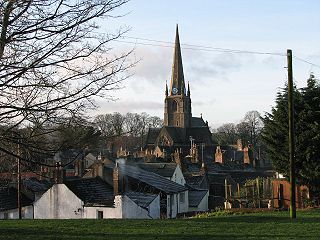
Cockermouth is a market town and civil parish in the Cumberland unitary authority area of Cumbria, England, so named because it is at the confluence of the River Cocker as it flows into the River Derwent. The mid-2010 census estimates state that Cockermouth has a population of 8,204, increasing to 8,761 at the 2011 Census.

Richard Southwell Bourke, 6th Earl of Mayo, styled Lord Naas from 1842 to 1867 and Lord Mayo in India, was a British statesman and prominent member of the British Conservative Party who served as Chief Secretary for Ireland and Viceroy of India (1869–72).
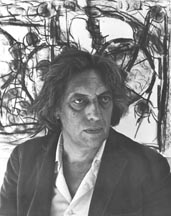
Jean-Paul Riopelle, was a Canadian painter and sculptor from Quebec. He had one of the longest and most important international careers of the sixteen signatories of the Refus Global, the 1948 manifesto that announced the Quebecois artistic community's refusal of clericalism and provincialism. He is best known for his abstract painting style, in particular his "mosaic" works of the 1950s when he famously abandoned the paintbrush, using only a palette knife to apply paint to canvas, giving his works a distinctive sculptural quality. He became the first Canadian painter since James Wilson Morrice to attain widespread international recognition.
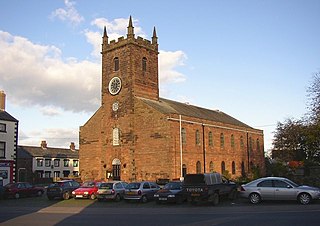
Wigton is a market town in Cumberland, Cumbria, England. It lies just outside the Lake District. Wigton is at the centre of the Solway Plain, between the Caldbeck Fells and the Solway coast. It is served by Wigton railway station on the Cumbrian Coast Line, and the A596 road to Workington. The town of Silloth-on-Solway lies 12 miles (19 km) to the west, beyond Abbeytown.

Trigger was a 15.3 hands palomino horse made famous in American Western films with his owner and rider, cowboy star Roy Rogers.
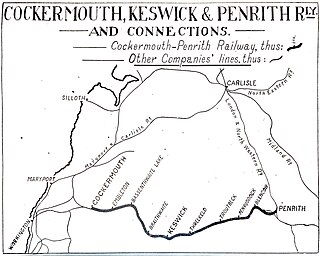
The Cockermouth, Keswick and Penrith Railway (CK&PR) was an English railway company incorporated by Act of Parliament on 1 August 1861, to build a line connecting the town of Cockermouth with the London and North Western Railway (LNWR) West Coast Main Line at Penrith. Arrangements for the use of the stations at either end were included. Passenger and goods traffic was worked by the LNWR and mineral traffic by the North Eastern Railway, both of whom had shares in the company. The line was 31+1⁄2 miles (50.7 km) in length, and had eight intermediate stations.

Watch Hill is a small hill lying on the north-western fringe of the Lake District in England. It has a height of 833 feet (254 m) and a prominence of 515 feet (157 m). The name Setmurthy Common is sometimes used to refer to the area including the highest point, with "Watch Hill" describing the area to the west of the summit. It should not be confused with another Watch Hill some 19 km to the south-west, near Whitehaven, which is only 172 m (564 ft) high. The name "The Hay" is also used when referring to the area west of the summit.
Timothy Wonnacott is an English chartered auctioneer, chartered surveyor, antiques expert, narrator, and a television presenter. He was previously a director of Sotheby's, one of the world's oldest auction houses.

The Portland Expo Center, officially the Portland Metropolitan Exposition Center, is a convention center located in the Kenton neighborhood of Portland, Oregon, United States. Opened in the early 1920s as a livestock exhibition and auction facility, the center now hosts over 100 events a year, including green consumer shows, trade shows, conventions, meetings and other special events. Located on the north side of Portland near Vancouver, Washington, it includes the northern terminus for the Yellow Line of Portland's light-rail transit system and has connections to TriMet Bus Line 11-Rivergate/Marine Dr.

Keswick railway station was on the Cockermouth, Keswick and Penrith Railway between Penrith and Cockermouth in Cumberland, England. It served the town of Keswick and accommodated the offices of the Cockermouth, Keswick and Penrith Railway Company.
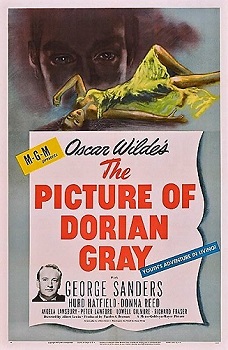
The Picture of Dorian Gray is a 1945 American supernatural horror-drama film based on Oscar Wilde's 1890 novel of the same name. Released in June 1945 by Metro-Goldwyn-Mayer, the film was directed by Albert Lewin, and stars George Sanders as Lord Henry Wotton and Hurd Hatfield as Dorian Gray. Shot primarily in black-and-white, the film features four colour inserts in three-strip Technicolor of Dorian's portrait; these are a special effect, the first two inserts picturing a youthful Dorian and the second two a degenerate one.
Cockermouth was the name of a constituency of the House of Commons of the Parliament of England in 1295, and again from 1641, then of the Parliament of Great Britain from 1707 to 1800 and of the Parliament of the United Kingdom from 1801 to 1918. It was a parliamentary borough represented by two Members of Parliament until 1868, and by one member from 1868 to 1885. The name was then transferred to a county constituency electing one MP from 1885 until 1918.
The Cockermouth & Workington Railway was an English railway company which built and operated a railway between the Cumberland towns of Workington and Cockermouth. The railway opened for service in 1847, and ran from the Whitehaven Junction Railway station at Workington to a station at Cockermouth near the bridge over the Derwent. A single-tracked line of eight and a half miles length, its revenue came largely from the transport of coal from the pits of the lower Derwent valley to the port at Workington for shipment by sea. The Marron extension of the Whitehaven, Cleator and Egremont Railway and the Derwent Branch of the Maryport and Carlisle Railway were both constructed to link with the C&WR and together give an alternative route for the northward movement of haematite ore from the Cumberland ore-field. The completion of the Cockermouth, Keswick and Penrith Railway made the C&WR part of a continuous through route between South Durham and the Cumberland orefield. These developments both improved the potential profitability of the C&WR, and made control of it important to bigger companies wishing to maximise the iron-ore traffic over their lines: the C&WR was absorbed by the London and North Western Railway in 1866.

The Victorious Charge is a public artwork by American artist John S. Conway located on the Court of Honor on West Wisconsin Avenue in downtown Milwaukee, Wisconsin, United States. The 1898 bronze sculpture is 9'10" high and sits on a 20' square granite pedestal.

The Statue of Idrimi is an important ancient Middle Eastern sculpture found at the site of Alalakh by the British archaeologist Sir Leonard Woolley in 1939, dating from the 15th century BC. The statue is famous for its long biographical inscription of King Idrimi written in the Akkadian language. It has been part of the British Museum's collection since the year it was discovered. The inscription includes the "first certain cuneiform reference" to Canaan.

Innocent Victims is a copper statue of Diana, Princess of Wales, and Dodi Fayed, which was on display at the Harrods department store in London, England, between 2005 and 2018. It was commissioned by Dodi's father Mohamed Al-Fayed when he owned Harrods, and designed by William Mitchell.

A bronze statue of Mahatma Gandhi by Fredda Brilliant was unveiled in 1968 at the centre of Tavistock Square in London, to mark the impending centenary of Gandhi's birth in 1869. Mahatma Gandhi had studied law at University College London nearby from 1888 to 1891, before being called to the bar at the Inner Temple.
















